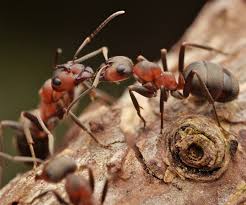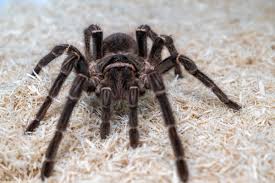GK
Exploring the Truth or Consequences of the US: Facts, Fun, and Fascination

Exploring the Truth or Consequences of the US: Facts, Fun, and Fascination
The United States of America is a nation of innovation, history, and global influence. Whether you’re digging into hard data or just looking for fun facts about the USA, there’s no shortage of information. From the quirky town of Truth or Consequences US to the credibility of platforms like USAFacts, this blog will walk you through intriguing insights into America.
Truth or Consequences US: A Unique American Town
You may be surprised to learn there’s a town named Truth or Consequences US. Located in New Mexico, it was originally called Hot Springs but renamed in 1950 after a radio show of the same name. Today, Truth or Consequences US is known for its hot springs, art festivals, and historic charm. If you’re looking for off-the-beaten-path USA cool facts, this quirky town deserves a mention.
In fact, Truth or Consequences US holds annual celebrations that attract thousands. This small town is a big part of American cultural oddities. Exploring Truth or Consequences US reveals not just local flavor, but also broader patterns of American spontaneity and creativity.
Interesting Facts of USA: The Nation Behind the Numbers
When you dig into the interesting facts of USA, you’ll quickly realize it’s a land of contradictions and surprises. Did you know the U.S. has over 45,000 zip codes, or that Alaska has more coastline than all other states combined?
The interesting facts of USA include both historical milestones and current global impacts. For example, the Declaration of Independence was signed in July 1776, but only a handful of Americans know the full list of signatories. Exploring the interesting facts of USA offers insight into why this country remains so influential.
Is USAFacts Bias or Balanced?
When people seek data-driven insights, they often ask: is USAFacts bias in any way? This is a fair concern in an era of misinformation. While some critics question, “is USAFacts bias or neutral?”, the organization claims it adheres to non-partisan and evidence-based data.
Still, the question of is USAFacts bias persists in academic and media discussions. It’s important to verify whether the facts presented are sourced accurately and without political motivation. Asking “is USAFacts bias” helps sharpen your media literacy skills.
USAFacts.org and the Quest for Trustworthy Data
US facts org — better known as USAFacts.org — is a nonprofit organization that compiles and presents data about the U.S. government, economy, and population. US facts org pulls its information from government sources like the Census Bureau and the Department of Labor.
Users visit US facts org to explore topics such as healthcare, education, and taxes. The goal of US facts org is to make data accessible and transparent. Whether you’re a student or policymaker, US facts org is a valuable tool for understanding America’s complex systems.
Facts for USA: What You Should Know
Learning facts for USA is crucial whether you’re a resident, visitor, or simply curious. Basic facts for USA include its 50 states, its founding in 1776, and its population of over 330 million.
But there are deeper facts for USA as well—like how it operates the world’s largest economy or how it maintains the largest military budget globally. When you research facts for USA, you begin to see why people across the globe look to America for leadership and innovation.
Why Is USA So Important?
Many ask, “why is USA so important on the global stage?” The answer lies in several factors: military power, economic might, cultural influence, and technological innovation.
From diplomacy to entertainment, the question of why is USA so important can be answered through multiple lenses. Whether you’re evaluating global GDP rankings or the number of Nobel Laureates, the question “why is USA so important” keeps resurfacing in global affairs.
Is USAFacts Non-Partisan? A Common Question
Another frequent concern is, “is USAFacts non-partisan?” The site itself claims to be free from political leanings. But skeptics always revisit the question, “is USAFacts non-partisan or subtly biased?”
To evaluate if is USAFacts non-partisan, look at its methodology, sources, and data transparency. Knowing whether is USAFacts non-partisan helps users determine the credibility of the content they’re consuming.
What Are Some Fun Facts About the USA?
If you’re looking for answers to “what are some fun facts about the USA,” here are a few gems:
The U.S. has no official language, although English is the most widely spoken.
Americans consume around 3 billion pizzas annually.
The U.S. is home to the world’s shortest river, the Roe River in Montana.
Knowing what are some fun facts about the USA makes learning enjoyable. The list of what are some fun facts about the USA keeps growing, with topics ranging from history to pop culture.
USA Facts for Kids: Making Learning Fun
When teaching children, USA facts for kids are incredibly helpful. These include basics like the national bird (bald eagle), capital (Washington, D.C.), and first president (George Washington).
Websites offering USA facts for kids use illustrations, games, and quizzes. USA facts for kids can help create a foundation for civic understanding from an early age.
Is USAFacts Reliable? A Deeper Look
The credibility of a platform often hinges on user perception. So, “is USAFacts reliable?” Many experts believe it is, thanks to its use of verifiable government data.
The platform ensures that those asking “is USAFacts reliable” can check original data sources. Whether you’re a journalist or a casual reader, answering “is USAFacts reliable” means checking for consistency and updates.
How Much Is the US Government Worth?
A common question in economics is, “how much is the US government worth?” While there’s no one figure, the total asset valuation of federal holdings, real estate, and infrastructure is in the tens of trillions.
When exploring how much is the US government worth, consider both tangible assets and debts. The answer to “how much is the US government worth” is essential for understanding fiscal policy.
Who Owns USAFacts?
Curiosity often leads to the question, “who owns USAFacts?” The platform was founded by Steve Ballmer, former CEO of Microsoft. So if you’re wondering who owns USAFacts, it’s a privately funded public service initiative.
Knowing who owns USAFacts helps assess the intent behind the information. Transparency about who owns USAFacts enhances trust in the organization.
How Much Is FactSet?
Another common financial query is, “how much is FactSet?” As a public company offering financial data and analytics, FactSet is valued in the tens of billions on the stock market.
So, how much is FactSet depends on stock fluctuations and quarterly earnings. If you’re in finance or investing, you’ll want to know “how much is FactSet” before making decisions.
USA Facts Website: One-Stop for Data
The USA facts website is where many Americans go to get reliable and nonpartisan data. The USA facts website provides dashboards, charts, and downloadable data sets.
The USA facts website serves students, teachers, analysts, and journalists. If you want facts without the fluff, the USA facts website is the place to go.
USA Funny Facts: Laughter and Learning
From unusual laws to strange habits, USA funny facts make learning fun. For example, in Ohio, it’s illegal to fish for whales on Sunday—even though Ohio has no ocean.
Other USA funny facts include the fact that Americans eat 100 acres of pizza a day! Yes, you read that right. The endless list of USA funny facts can turn a dull afternoon into an entertaining trivia night.
USA Cool Facts: Pop Culture and Beyond
USA cool facts range from space achievements to internet history. Did you know the U.S. was the first country to land a man on the moon? Or that Silicon Valley revolutionized the tech world?
Whether you’re into music, fashion, or science, there are USA cool facts for everyone. The more you explore, the more you’ll uncover cool, mind-blowing realities.
US X Factor: The Magic Behind the Curtain
What’s the US X factor that makes America exceptional? Is it the Constitution, the entrepreneurial spirit, or the cultural diversity? Perhaps it’s a mix of all three.
From sports to innovation, the US X factor shines globally. Many believe the US X factor lies in its resilience and adaptability.
Things Invented in the US: Game-Changers
Looking at things invented in the US, you’ll find a long list: the internet, the light bulb, the airplane, and even the hamburger.
When studying things invented in the US, it’s clear the nation thrives on innovation. Exploring things invented in the US reminds us of its contributions to global advancement.
Related:
To ensure SEO success, we also include related keywords like:
facts about America
US government data
American inventions
fun USA trivia
reliable US websites
Final Thoughts
Whether you’re diving into data on the USA facts website, laughing over USA funny facts, or pondering why is USA so important, there’s always more to learn. From Truth or Consequences US to things invented in the US, America is full of surprises, stories, and stats.
So, bookmark this post, revisit the interesting facts of USA, and never stop exploring!
Need help creating more keyword-rich blog content? Just ask!

GK
How Do Satellites Stay in Orbit? A Complete Guide

How Do Satellites Stay in Orbit? A Complete Guide
When we look up at the night sky, we often wonder, how do satellites stay in orbit? These human-made marvels play a crucial role in communication, weather forecasting, navigation, and scientific research. But the science behind their motion often sparks curiosity. In this blog, we will explore how do satellites stay in orbit, how do satellites move, how do satellites work, and how do satellites orbit the Earth in a simple, easy-to-understand way.
The Basics: How Do Satellites Stay in Orbit?
To answer the big question—how do satellites stay in orbit—we need to understand gravity and velocity. A satellite is launched into space with enough speed to counteract the pull of Earth’s gravity. If it moves too slowly, it will fall back to Earth. If it moves too quickly, it will escape Earth’s gravity. The perfect balance between speed and gravity is what allows satellites to remain in orbit.
This balance is why the question of how do satellites stay in orbit fascinates scientists and space enthusiasts alike. Simply put, satellites are constantly “falling” toward Earth due to gravity, but because they are moving sideways so quickly, they keep missing Earth, creating a continuous orbit.
How Do Satellites Move in Space?
Now that we understand how do satellites stay in orbit, another question arises: how do satellites move?
Satellites move in space because of the momentum given to them during launch. Once in orbit, they don’t need engines running continuously to keep moving. Instead, they rely on the laws of physics—specifically Newton’s First Law of Motion, which states that an object in motion stays in motion unless acted upon by an external force.
So, how do satellites move? They circle Earth at extremely high speeds—often thousands of kilometers per hour. This movement ensures that they maintain their orbit while serving their purposes, such as GPS navigation, weather monitoring, or internet connectivity.
How Do Satellites Work?
Understanding how do satellites work helps us appreciate their role in daily life.
Satellites are equipped with communication systems, sensors, solar panels, and antennas. Depending on their type, they collect data, send signals, or relay communication. For example, weather satellites take pictures of cloud formations, while GPS satellites send signals that help your phone calculate your location.
So, how do satellites work in practice? They receive signals from Earth, process them, and send them back, sometimes bouncing information between multiple satellites to ensure coverage across the globe. Without satellites, modern life—from weather reports to smartphone maps—would look very different.
How Do Satellites Orbit the Earth?
Another important concept is how do satellites orbit the Earth. When a satellite is launched, it’s placed into a specific orbit depending on its mission.
So, how do satellites orbit the Earth effectively? They follow paths determined by their speed, altitude, and Earth’s gravitational pull. Low Earth orbit (LEO) satellites, for example, orbit closer to Earth and are used for imaging and communication. Geostationary satellites orbit much farther away, appearing “fixed” over one point of Earth, which makes them perfect for weather and television broadcasting.
Understanding how do satellites orbit the Earth reveals the planning and precision behind every satellite launch. Engineers calculate exact speeds and angles to ensure satellites serve their purpose without drifting off course.
Everyday Examples of Satellites in Action
Communication satellites: Deliver TV, radio, and internet services.
Weather satellites: Help meteorologists forecast storms and track climate patterns.
GPS satellites: Guide airplanes, ships, cars, and smartphones.
Scientific satellites: Observe Earth, study space, and provide crucial research data.
In all these cases, the core principles of how do satellites stay in orbit, how do satellites move, how do satellites work, and how do satellites orbit the Earth are at play.
Why Understanding Satellites Matters
Knowing how do satellites stay in orbit isn’t just for space scientists—it also helps us appreciate the technology we use every day. Whether you’re checking weather updates, navigating with GPS, or streaming a live event, satellites are silently working above us.
Understanding how do satellites move gives insight into their reliability. Recognizing how do satellites work highlights their contribution to global communication. And exploring how do satellites orbit the Earth shows how human innovation has harnessed natural forces to achieve incredible technological feats.
Final Thoughts
So, how do satellites stay in orbit? They balance the pull of Earth’s gravity with their speed, creating a stable path around our planet.
How do satellites move? By maintaining momentum once launched into space.
How do satellites work? Through advanced systems that collect and transmit signals and data.
And finally, how do satellites orbit the Earth? By following carefully calculated paths that match their mission requirements.
Satellites are not just objects floating in the sky—they are the backbone of our modern, connected world.

GK
Why Do Ants Communicate? Secrets of Their Tiny World

Why Do Ants Communicate? Secrets of Their Tiny World
When you see a line of ants moving in perfect coordination, you might wonder: Why do ants communicate so effectively compared to other insects? Ants are social creatures that thrive in colonies, and their survival depends on constant communication. Understanding why do ants communicate opens up fascinating insights into nature’s most cooperative societies.
Why Do Ants Communicate?
Ants live in large colonies where cooperation is key. From finding food to protecting their queen, ants rely on teamwork. So, why do ants communicate so much? The answer is simple: they need to share vital information. Without communication, their organized system would collapse.
But why do ants talk to each other in ways humans can’t easily see? They use chemical signals, body language, and even touch. These methods help ants build trails, warn others about danger, and decide who does what job in the colony.
What Do Ants Communicate With Each Other?
One major question scientists ask is: what do ants communicate with each other? Ants mainly communicate through pheromones—special chemicals they release into the air or onto the ground. For example, when a worker ant finds food, it leaves a scent trail so others can follow.
Another answer to what do ants communicate with each other includes danger signals. If predators threaten the colony, ants release alarm pheromones, and instantly, the army of ants prepares to defend their home.
So, why do ants communicate? Because sharing food sources, defense strategies, and even instructions about colony building is essential to their survival.
Why Do Ants Talk to Each Other?
If you’ve ever watched ants closely, you might think: why do ants talk to each other when they can simply work on their own? The truth is, no single ant could survive long without help. Ant colonies are like super-organisms, and each ant is just one small part of the larger system.
Scientists discovered that ants talk to each other not only with chemicals but also by tapping their antennae. This is how they pass on messages about food, danger, or even grooming needs.
So, why do ants talk to each other so often? Because it keeps the colony strong, united, and efficient.
What Do Ants Talk About?
Have you ever wondered: what do ants talk about during their busy lives? While ants don’t talk the way humans do, their signals carry important “conversations.” For example, what do ants talk about includes:
Food locations
Predators or threats
Which direction to travel
Nest maintenance
Caring for larvae and the queen
So, if you ask, what do ants talk about, the answer is survival and teamwork. Every message strengthens the colony’s unity.
What Do Ants Use to Communicate?
Now let’s answer another vital question: what do ants use to communicate? The main tools are:
Pheromones – chemical signals to mark paths and warn of threats.
Antennae tapping – a form of “touch language.”
Vibrations – some ants can produce sound by rubbing body parts, known as stridulation.
Therefore, what do ants use to communicate is not sound or words like humans, but advanced biological methods designed for efficiency.
By learning what do ants use to communicate, we realize why these tiny insects can achieve such large-scale cooperation.
Ants Talk to Each Other Constantly
It’s fascinating how often ants talk to each other while working. Every ant has a job, and constant interaction keeps the whole colony in sync. Imagine if thousands of ants worked silently, without signals—it would be chaos.
Because ants talk to each other using multiple strategies, they can adapt quickly to challenges like floods, food shortages, or predator attacks. This makes their survival strategy nearly flawless.
So, the reason ants talk to each other is clear: communication equals survival.
Conclusion: Why Do Ants Communicate?
In summary, why do ants communicate is one of nature’s most interesting mysteries. These tiny creatures communicate to share food sources, defend their colony, and ensure every ant knows its role. By studying what do ants communicate with each other, why do ants talk to each other, what do ants talk about, and what do ants use to communicate, we learn how powerful teamwork can be.
Ant colonies remind us that even the smallest beings rely on unity and connection. Just as ants talk to each other to thrive, humans also depend on communication for survival and growth.

GK
How Do Spiders Spin Webs? A Fascinating Look Into Nature’s Architects

How Do Spiders Spin Webs? A Fascinating Look Into Nature’s Architects
Spiders are among the most fascinating creatures in the animal kingdom. Their ability to create intricate and strong webs has amazed humans for centuries. One of the most common questions people ask is, “How do spiders spin webs?” Understanding this natural engineering marvel not only satisfies curiosity but also highlights the wonders of biology and evolution. In this article, we’ll explore in detail how do spiders spin webs, how do spiders spin silk, and how they manage to build webs across trees, gaps, and open spaces. We’ll also include how do spiders make webs step by step so that both adults and kids can easily understand this process.
Introduction: Why Webs Matter
Spiders belong to the class Arachnida, and most of them use webs for survival. Webs are not just beautiful patterns; they serve multiple purposes such as:
Capturing prey
Providing shelter
Protecting eggs
Helping in movement across open spaces
Before diving deeper into how do spiders spin webs, it’s important to understand that the secret lies in their silk glands, located in the abdomen.
How Do Spiders Spin Webs?
When people wonder, “How do spiders spin webs?”, the answer lies in silk production. Spiders have specialized organs called spinnerets at the back of their abdomen. These spinnerets release silk proteins that harden upon contact with air, creating the threads that form a web.
The process of how do spiders spin webs is guided by instinct. Without any formal training, spiders know exactly how to create geometrically perfect webs. Scientists believe this is due to millions of years of evolution, allowing spiders to perfect this skill for survival.
How Do Spiders Spin Silk?
Another common curiosity is, “How do spiders spin silk?” Silk is produced in liquid form inside the spider’s silk glands. As it passes through the spinnerets, the liquid silk transforms into a solid thread.
Spiders can spin different types of silk for different purposes:
Sticky silk – used for capturing prey.
Non-sticky silk – used for structural support.
Silk for egg sacs – protective silk to safeguard offspring.
Understanding how do spiders spin silk is crucial because silk is not just strong but also flexible. In fact, spider silk is stronger than steel of the same thickness.
How Do Spiders Spin Webs Step by Step?
To better understand how do spiders make webs step by step, let’s break it down:
Anchor Line Creation – The spider releases silk into the air. When the silk catches onto a surface, it forms the first anchor.
Bridge Line Formation – To explain how do spiders spin webs across large gaps, the spider creates a bridge line by letting the wind carry the silk to another surface.
Frame Building – The spider strengthens the outline of the web by adding more silk around the anchor points.
Radial Lines – The spider moves from the center outward, forming straight radial lines like bicycle spokes.
Spiral Construction – Finally, the spider builds a spiral from the inside out, creating a sticky pattern to trap insects.
This systematic approach shows exactly how do spiders make webs step by step without any trial and error.
How Do Spiders Spin Webs Across Large Gaps?
One of the most amazing feats is how do spiders spin webs across large gaps. Spiders rely on the wind to carry a thin strand of silk across the gap. When the strand sticks to another surface, the spider carefully walks across and strengthens it.
This natural engineering marvel explains how do spiders spin webs across open spaces as well. Even when no close surfaces exist, spiders can release silk threads into the wind, allowing them to form bridges that become the foundation of their webs.
How Do Spiders Spin Webs for Kids?
Explaining how do spiders spin webs for kids can be both educational and fun. Kids love to watch spiders in action, and breaking it down simply helps them appreciate nature.
For example, you can say:
Spiders have silk inside their bodies.
They use their back legs to pull out the silk like a thread.
First, they make a straight line (like a rope).
Then, they make a circle and decorate it with sticky silk to catch bugs.
Making this explanation simple is the best way to answer how do spiders spin webs for kids while sparking their interest in science.
How Do Spiders Make Webs?
People often ask, “How do spiders make webs?” The short answer is: spiders use silk from their spinnerets to build strong and organized structures that help them survive.
When exploring how do spiders make webs, it’s important to note that not all spiders make the same kind of web. Some create orb webs, while others make funnel webs, sheet webs, or even trapdoor webs.
How Do Spiders Make Webs Between Trees?
One of the most fascinating abilities is how do spiders make webs between trees. Just like with gaps, spiders let silk float through the air until it attaches to a branch of another tree. Once it does, they cross over and strengthen the silk, repeating the process until a full web is formed.
This natural method is why we often see large webs stretching between tree branches in gardens and forests. Understanding how do spiders make webs between trees gives us insight into how these creatures survive even in wide, open natural environments.
The Science Behind Web Strength
To truly appreciate how do spiders spin webs, one must also understand the incredible strength of spider silk. Research shows that spider silk is five times stronger than steel of the same thickness, yet it is incredibly lightweight.
This is why scientists study how do spiders spin silk to inspire innovations in materials science, including medical sutures, protective clothing, and even aerospace technology.
Why Are Spider Webs So Precise?
Many people wonder how such a small creature can make such geometrically perfect webs. The answer lies in instinct and evolutionary programming. Spiders don’t learn how do spiders make webs step by step from their parents—they are born with the ability coded in their DNA.
This explains why spiders in different parts of the world create similar types of webs without any training.
Fun Facts for Kids About Spider Webs
To make learning about how do spiders spin webs for kids engaging, here are some fun facts:
A spider can rebuild a damaged web in just one night.
Some spiders eat their own webs to recycle the silk.
Webs can be invisible to humans but easily felt by insects.
Not all spiders make webs—some hunt without them.
Conclusion
Spiders are nature’s skilled engineers, and their webs are masterpieces of survival. By understanding how do spiders spin webs, how do spiders spin silk, and how do spiders make webs step by step, we get a glimpse into one of the most fascinating behaviors in the animal kingdom.
Whether it’s how do spiders spin webs across large gaps, how do spiders spin webs across open spaces, or how do spiders make webs between trees, these tiny creatures showcase extraordinary problem-solving skills.
So the next time you see a spider web glistening with morning dew, take a moment to appreciate not just its beauty, but the incredible biological process behind it.

-

 Business2 months ago
Business2 months ago☕️The Ultimate Coffee Lover’s Guide: From Caffeine in a Cup of Coffee to Turkish Coffee Delights
-

 Business2 months ago
Business2 months agoThe Many Faces of “Future”: Markets, Farming, Music, AI, and a Better Tomorrow
-

 Business2 months ago
Business2 months agoIn today’s fast‑moving economy, what industry is slowly dying and why?
-

 Health2 months ago
Health2 months agoA Journey Through Life’s Firsts: Health, Gaming, and Experiences That Shape Us
-

 Lifestyle2 months ago
Lifestyle2 months agoWhat is life Philosophy?
-

 Tech1 month ago
Tech1 month agoUltimate Secret Android Apps You’ll Actually Love
-

 Business2 months ago
Business2 months agoRussia’s Energy Ministry Launches Crypto Mining Register
-

 Lifestyle2 months ago
Lifestyle2 months ago🐦 The Ultimate Bird Watching Guide: Best Birdwatching Locations & Tips for Beginners



